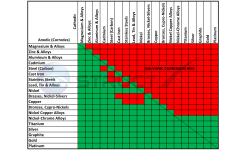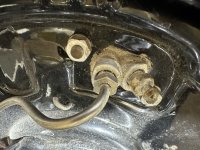I have a 100-4 with a low mileage restoration. Recently upon checking the lights for function I noticed I had no brake lights. I traced the problem to the brake light switch in the hydraulic brake system. The wires terminated at the switch were corroded as was portions of the switch. When I say corroded it has the appearance of electrolysis I think, a white powdery coating on the wires and switch. There is zero rust on the chassis.
I cleaned this white powdery substance from the switch, cleaned and restripped the wires, reterminated them and all was fine for a while. I've added a couple hundred miles since then and the condition has come back along with the lights failing again.
Any ideas what is happening here?
I cleaned this white powdery substance from the switch, cleaned and restripped the wires, reterminated them and all was fine for a while. I've added a couple hundred miles since then and the condition has come back along with the lights failing again.
Any ideas what is happening here?

 Hi Guest!
Hi Guest!

 smilie in place of the real @
smilie in place of the real @
 Pretty Please - add it to our Events forum(s) and add to the calendar! >>
Pretty Please - add it to our Events forum(s) and add to the calendar! >> 




